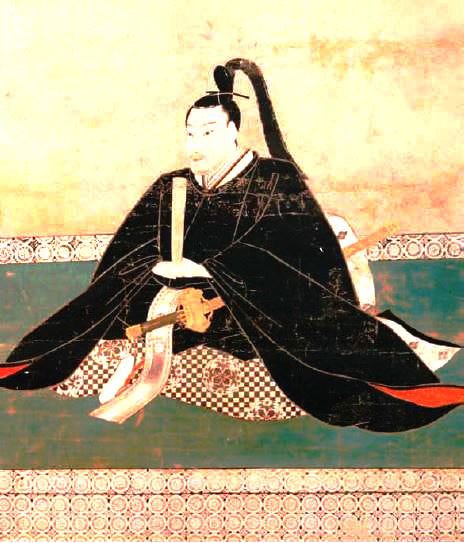With a stipend of 605,000 koku, one of the most affluent and powerful lords of the early Edo Period was Shimazu Tadatsune. Born November 27 1576, Tadatsune was named heir to the Shimazu clan (Also written as Shimadzu) just prior to the Battle of Sekigahara, where his father had fought on the losing side. His uncle, Yoshihisa, was first in line to succeed the head of the Shimazu clan, but at the time was heirless. His other uncle, Hisakazu had fallen ill and had died in Korea, and so Tadatsune was named successor. He took control in 1602, however, his father held the bulk of power until his death in 1619.
The Shimazu clan were respected for their prowess on the battlefield, and Tadatsune was also known for his bravery. During Hideyoshi’s Korean Campaign, he and his father headed an 8,000 samurai army, and drove off a Chinese Ming army of 100,000 soldiers.
In 1602, two years after the Battle of Sekigahara, Tadatsune formally submitted to Tokugawa Ieyasu as a sign of loyalty, and in doing so was awarded the name of Matsudaira Iehisa. This was seen as a great honour, as Matsudaira was Ieyasu’s original family name, and the Matsudaira were a branch of the Tokugawa. Tadatsune also accepted the first part of Ieyasu’s name in receiving Iehisa as a given name, an even greater honour. Despite this great honour, he remained a tozama daimyo, an outsider daimyo with an indirect relationship with the Shogun.
Tadatsune worked hard to secure his clan’s future. As head of the Shimazu clan, Tadatsune weeded out corruption and disloyalty among his retainers.
As Daimyo of Satsuma, and on behalf of the Edo Bakufu, Shimazu Tadatsune completed his successful invasion of the Ryuku Kingdom (Okinawa) on April 5, 1609. Satsuma (Kagoshima) had had trade and diplomatic relations for a at least two centuries prior to the Satsuma invasion, with Ryukyu paying tributes to both Japan’s ruling Muromachi Shogunate and China since 1372.
In the later years of the 16th Century, the then ruler of Japan, Toyotomi Hideyoshi, through the Shimazu clan, had requested various services from the Ryukyu King, Sho Nei. A number of these demands were met, others were ignored, which soon soured the relationship.
After the Battle of Sekigahara in 1600, the Shimazu clan invited the Ryukyu Kingdom to submit to the new Shogun, Tokugawa Ieyasu. This offer was flatly ignored. Three years later, when some Ryukyu sailors were shipwrecked near Sendai, Ieyasu had them cared for, and safely sent home. There was no word of thanks nor recognition from the island kingdom for Ieyasu’s kindness despite the Shimazu’s urging.
In March of 1609, and with the permission of the Tokugawa Shogunate, the Shimazu launched 100 ships carrying 3,000 men to the Ryukyu Islands. Amami Island was taken easily and peacefully, with the locals assisting the Satsuma forces. Resistance was seen on the island of Tokunoshima when over 1000 locals attacked eight Satsuma ships berthed at Wanya at night.
The fleet then set sail for the main Ryukyu Island, and for Nakajin Castle, which they found deserted. Hearing of the Japanese arrival, King Sho Nei then sent a Zen Priest as a diplomat to sue for peace. The Satsuma officers then made their visit to the capital Naha and Shuri Castle, from where King Sho Nei ruled.
With peace conditions declared, King Sho Nei then visited the retired Tokugawa Ieyasu in Sumpu Castle, and then his son, the Shogun, Hidetada in Edo. During his two-year absence, Shimazu clan officials controlled and surveyed the islands, which, although maintained some autonomy, came under the jurisdiction of Satsuma. This was kept secret from the Chinese, allowing the Ryukyu Island’s extensive trade with China, Korea and Southeast Asian nations to continue, to the benefit of Satsuma Domain, as this kept the Shimazu clan economically strong, and important for Japans’ trade. This continued until the end of the Edo period and beyond, until the Ryukyu Islands were formally annexed by Japan in 1879 becoming Okinawa Prefecture.
Like many of the Shimazu clan leaders, Tadatsune a.k.a. Iehisa, was a highly intelligent man of culture, concerned not just with military matters, but also with improving the standing of his clan within the Bakufu, and with improving the domains’ financial strength. Little wonder that despite being against the Tokugawa at Sekigahara, the Shimazu were one of the most influential and successful of clans prior to and during the Edo period. Tadatsune died April 7, 1638, aged 61.




